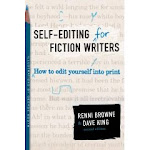Sunday, June 27, 2010
WHEN LIFE IMITATES ART
In fact, it does sound an awful lot like the book I just finished, U is for Undertow by Sue Grafton. Her PI, Kinsey Millhone, first encountered her estranged family a few books back. She always considered herself a loner since her Aunt Gin died, and now she's being invited to a family gathering to meet the grandmother she thought had rejected her.
This morning I received an email from a total stranger. A stranger, except that we shared the same maiden name. She said she had received my information from my half-brother who had been "very excited" to locate me at last. She was my father's first cousin. She included enough information to make her statement believable.
Jolt. My father died 11 years ago. Jolt. My half-brother and step sister, whom I thought weren't concerned about me, and hunted me down. Jolt. My cousin introduced me to 38 more cousins on Facebook. Jolt. My stepsister invited me to come and visit.
I feel like I'm Kinsey in my own personal novel.
Will any of this show up in a book some day? Probably. I don't know how I feel about it all yet.
What part of your writing stems from personal experience? Do you know of any true life stories that are weirder than fiction? As any editor will tell you, it's not enough to say "but it really happened that way." The author has to make it believable.
Feel free to share some of those strange, humorous, eventful circumstances that have threaded your life.
FYI: Check out http://apenforyourthoughts.blogspot.com/ for an interview and giveaway of my latest release, Prodigal Patriot.
Sunday, June 20, 2010
How Well Do You Know Your Characters?
Let me give you an example. The writer may have set up the main character as shy and retiring and then has a scene where she’s up on stage and comfortable. This is an obvious flaw, but I’ve actually seen writers make this mistake. So how do you avoid this? You must spend time prewriting—evaluating who your character is and what your character’s motivations are.
These are the things you must determine.
First, what is your character’s greatest fear? Knowing this can set up your book’s climax by forcing your character to face her fear.
Second, what does your character want most in life? This will allow you to give your character believable motivation.
Third, how does your character see herself? Is she a rescuer or maybe a peacemaker? This will help you keep your character true to herself.
Fourth, why does your character see herself in this role? Is there a defining event in her life that led her to this determination?
Fifth, how does your character need to grow? What does she need to learn?
You should answer these questions for all POV (point of view) characters. This will help you write well rounded characters, as well as give you a wealth of possibilities for plot points and subplots.
There are several writing books on this topic that I highly recommend.
Getting into Character
By Brandilyn Collins
From the Inside Out
By Susan May Warren & Rachel Hauck
Let’s play with characterization. DON’T mention the book, but share an example you’ve found where a character didn’t act right.
Based on Darlene's comment, let's also talk about books that did characterization well!
Monday, June 14, 2010
Reduce, Reuse, Recycle
Over the years, writers tend to pile story/article ideas, partially finished manuscripts, rejected manuscripts ... we need more and more space (whether digital or physical) to keep track of our writing family.
What can we do with the growing junk pile? Recycle it.
The “reduce” rule would make an excellent topic for a post on writing tight ... I’ll save that for another day.
But ... reuse and recycle. Those both apply to our “leftovers.”
Reuse I think of in terms of research. Some people have made a career out of writing about the same setting (time, place, and/or culture). Beverly Lewis and Wanda Brunstetter and their Amish books come to mind, although both women have written books in other genres as well. I belong to a marketing group that started among writers committed to American history 1860-1876, Civil War through Reconstruction.
The same time period is the setting for two of my published books as well as a third that an editor has expressed interest in. I keep reusing my understanding of the Year of No Summer in new ways. (Beacon of Love and Bridge to Love)
Researched a story about storm chasers that didn’t sell as a romance? How about reworking it as suspense? A contemporary novella I proposed about a fire in Mesa Verde National Park has morphed into a historical novel about a film producer filming the Anasazi ruins at Mesa Verde.
Use topics you researched in depth for publicity. Offer yourself as a speaker on that topic. Blog about it. Write articles. I wrote an article on witnessing to Buddhists which involved a lot of research. I used and expanded that research to write a second article on a biblical view of reincarnation. (Both articles sold.)
- Your assignment: Find a story you have written and/or sold. How can you use the same information you accumulated during writing that book in a new and different way
Recycle:
Reprints. If you write articles and short stories, keep looking for places to sell reprint rights. My short story The Ultimate Survivor has appeared in three separate places.
Rewrite. Write on the same topic with a slightly different slant. I wrote three articles on using “the arts” in children, one for a parenting magazine and two for teaching magazines.
Prolong. If you’ve written a stand alone, and a publisher wants a series, find a character (or characters) that demand their own story. That’s what I did with my first book, Romanian Rhapsody: Carrie’s best friend Michelle will have her own romance in Plainsong.
- Your assignment: Think of a character from one of your books who could be the center of another story; or research ways to resell or rewrite articles you’ve already sold once.
Reminder: For an opportunity to win one of my books (as well as books by Susan Page Davis and Karen Witemeyer), please leave one or more comments on my blog darlenefranklinwrites.blogspot.com during the month of June.
Sunday, June 6, 2010
It's Time For Show and Tell!
Example #1
The scent was fresh and new like a flower after the rain.
Verb choice - was
Noun choice – flower
This sentence isn’t bad, but it could be great. The writer in this example is telling instead of showing.
Example #2
The fresh scent hung in the air like a late blooming rose after the rain.
Verb choice – hung
Noun choice – rose (specifically a late blooming rose)
This sentence is great because it doesn’t tell us about the smell. Instead, the writer invites us to remember a smell. This is showing. It draws the read in and invites them to experience what’s happening.
Let’s look at two more examples
Example #3
Susan felt restless.
Verb choice – felt
Noun choice – Susan
Again, the writer is telling us how Susan felt
Example #4
Susan paced across the floor, wearing a pattern in the dust.
Verb choice – paced, wearing
Noun – Susan, floor, dust
Can you see the difference? The writer is again pulling us in with word pictures, showing us the action.
Special Note: There are times when telling is better than showing. You want to use telling when the action isn’t important or when it’s a common action that doesn’t need emphasis. For example, you don't have to say, "Susan bent her knees and lowered herself into the chair." Unless, you're trying to emphasize the WAY she's sitting to let us know her emotion. If she just sat, say, "Susan sat in the chair."
There are some words to watch for - words that can let you know you're telling instead of showing.
Felt
Remembered
Knew
Watched
Saw
Looked
Was
words that end in ing
words that end in ly
Okay, now it's your turn. Take one of the following sentences and make it great.
The morning was foggy.
Jacob was so mad he couldn't speak.
The smell made Penny sick.











